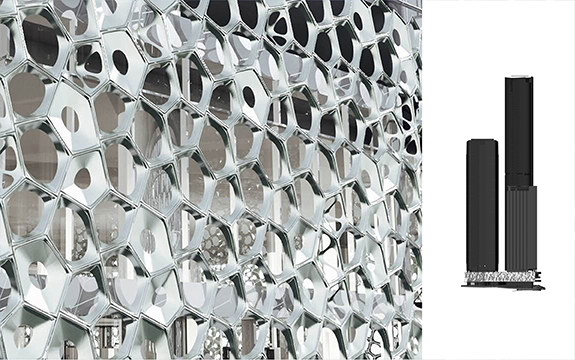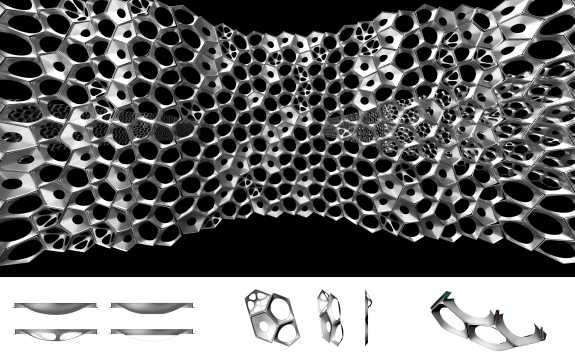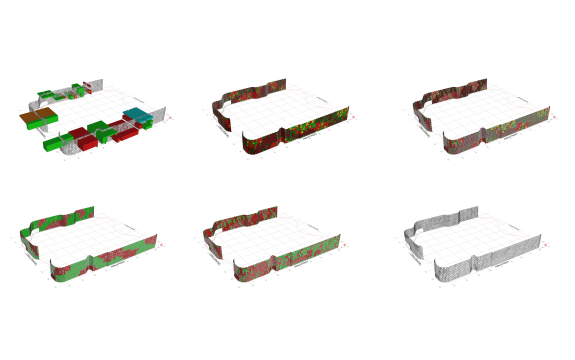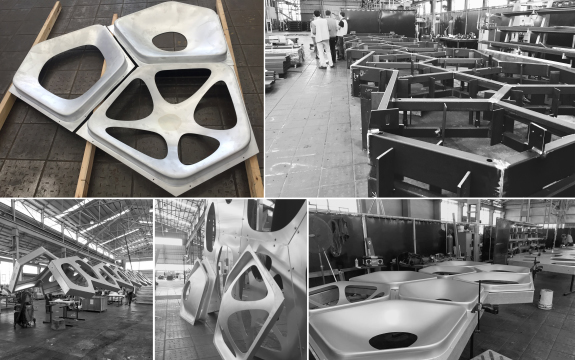The Sound That Light Makes connecting architecture to nature

In Summary
- Form, pattern and materiality of the facade inspired by sunlight playing on the surface of moving water
- 2400 square metre facade is divided into parts with repeating geometries making the cost of tooling and construction viable
- Tessellated aluminium forms create complex reflections, structural strength and provide functional openings
Canhui Chen, lecturer in Architectural Design at Swinburne, has spent the past five years researching computational digital design. He is investigating how it brings new life to traditional manufacturing and construction techniques.
He sees a synergistic relationship between computational modelling, manufacturing techniques and the fabrication process.
“I am interested in computational design and complex architectural geometries. I am also creating fabrication processes that link with practical manufacturing methods and materiality. My focus is to create sophisticated and beautiful tectonic systems that are embedded with highly rational structural and construction logic that enables them to be affordable,” says Mr Chen.
In 2015, Mr Chen and artist Alexander Knox won a competition to create an art facade for the new Brisbane Quarter development at 300 George Street in Brisbane’s CBD.
Titled, The Sound That Light Makes, the facade aims to connect the natural world with the highly urbanised city of Brisbane. The form, pattern, and materiality of the ‘sculptural screens’ are inspired by sunlight playing on the surface of moving water. The work references the nearby Brisbane River, as it winds through the city.

Rendering of art facade detail by Canhui Chen.
“I am interested in engaging with the elements within the city that remain relatively unchanged since before European settlement,” explains Mr Knox.
“Interactions between the movement of the river, sunlight and the sky look the same to us today as they would have to the various Indigenous groups that inhabited Meanjin (Brisbane) before European settlement.
“Although the play of light on the river is an ephemeral phenomenon, it forms a thread through time. It’s a rare connection point within the contemporary city to the pre-urban environment,” Mr Knox says.
Drawing on the dynamic natural presence of the Brisbane River, The Sound That Light Makes extends its effect and feel around the Brisbane Quarter podium. “The river’s undulating silver surfaces create a constantly changing play of light, metallic surfaces, shadows and voids,” says Mr Knox.

Aluminium form details, by Canhui Chen.
“I created an algorithmic model to synthesise the functional objectives and design complexities of manufacturing and construction of the facade. The 2400 square metre facade area is divided into parts. Each part has a limited number of repeating geometries. This makes the cost of tooling and construction viable,” explains Mr Chen.

Algorithmic geometric patterns by Canhui Chen
Consisting of 2660 panels, The Sound That Light Makes is tessellated with aluminium forms, pressed from sheet into three-dimensional shapes. These are trimmed and anodised. The forms create complex reflections and provide functional openings and structural strength.

Sketches for the art facade geometry by CanHui Chen.
Brisbane’s Urban Art Project detailed the sub-structures, the 12-metre-long backing frame modules and manufactured the individual facade panels. Completion of the facade and the Brisbane Quarter development is scheduled for 2020.

Panels fabricated and assembled at Urban Art Project factory in Brisbane. Image supplied by Urban Art Project.
For more information, contact the Design Factory Melbourne at dfm@swin.edu.au

